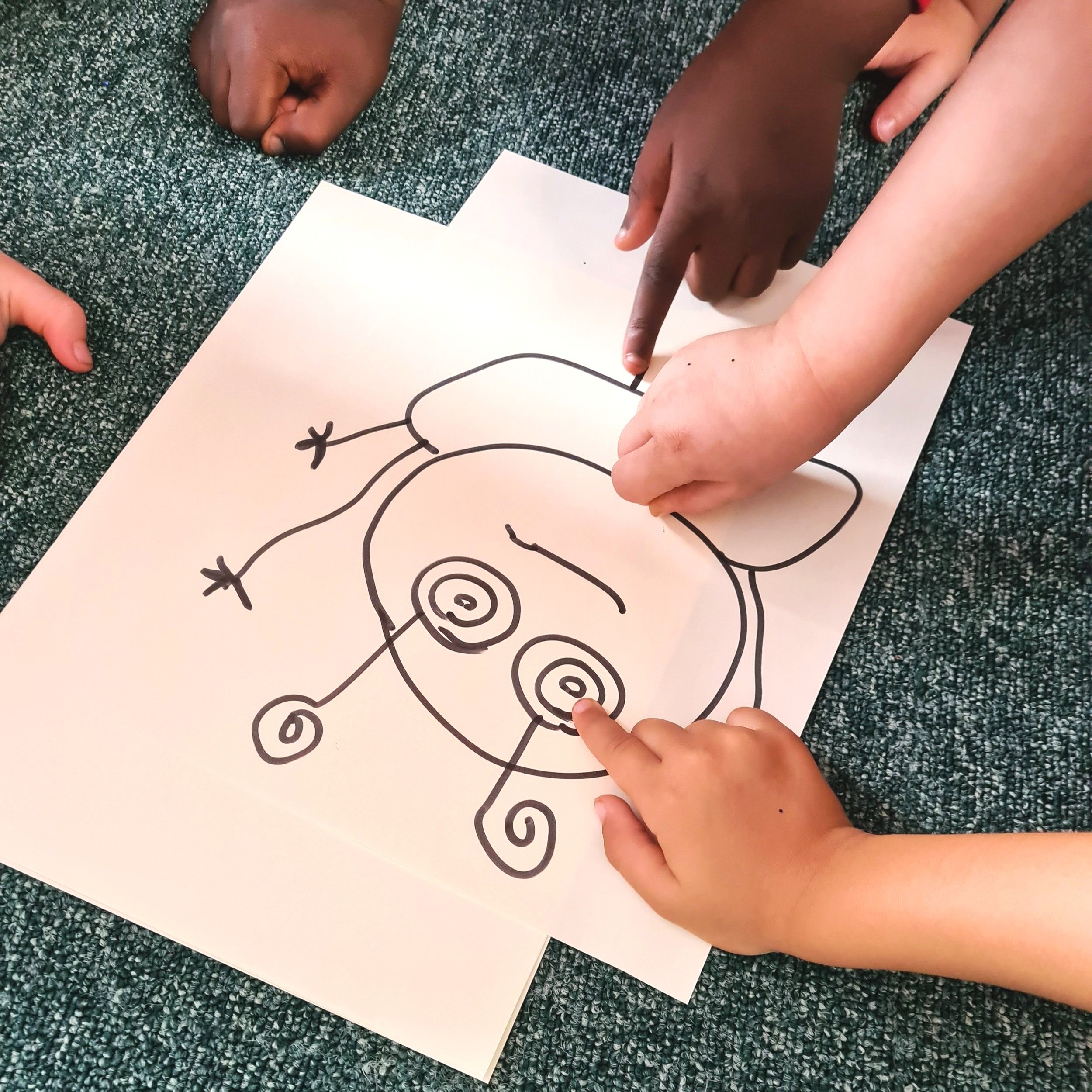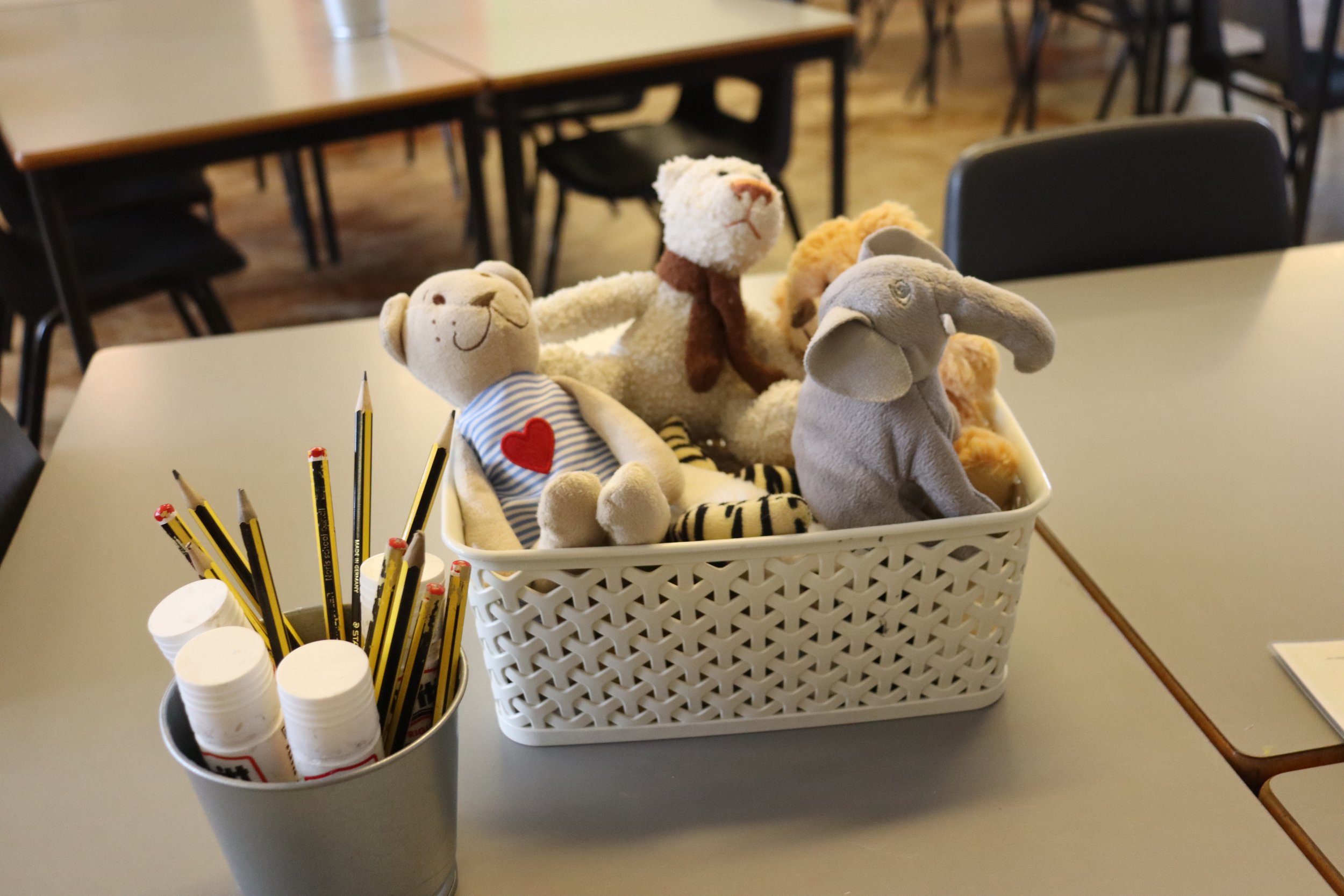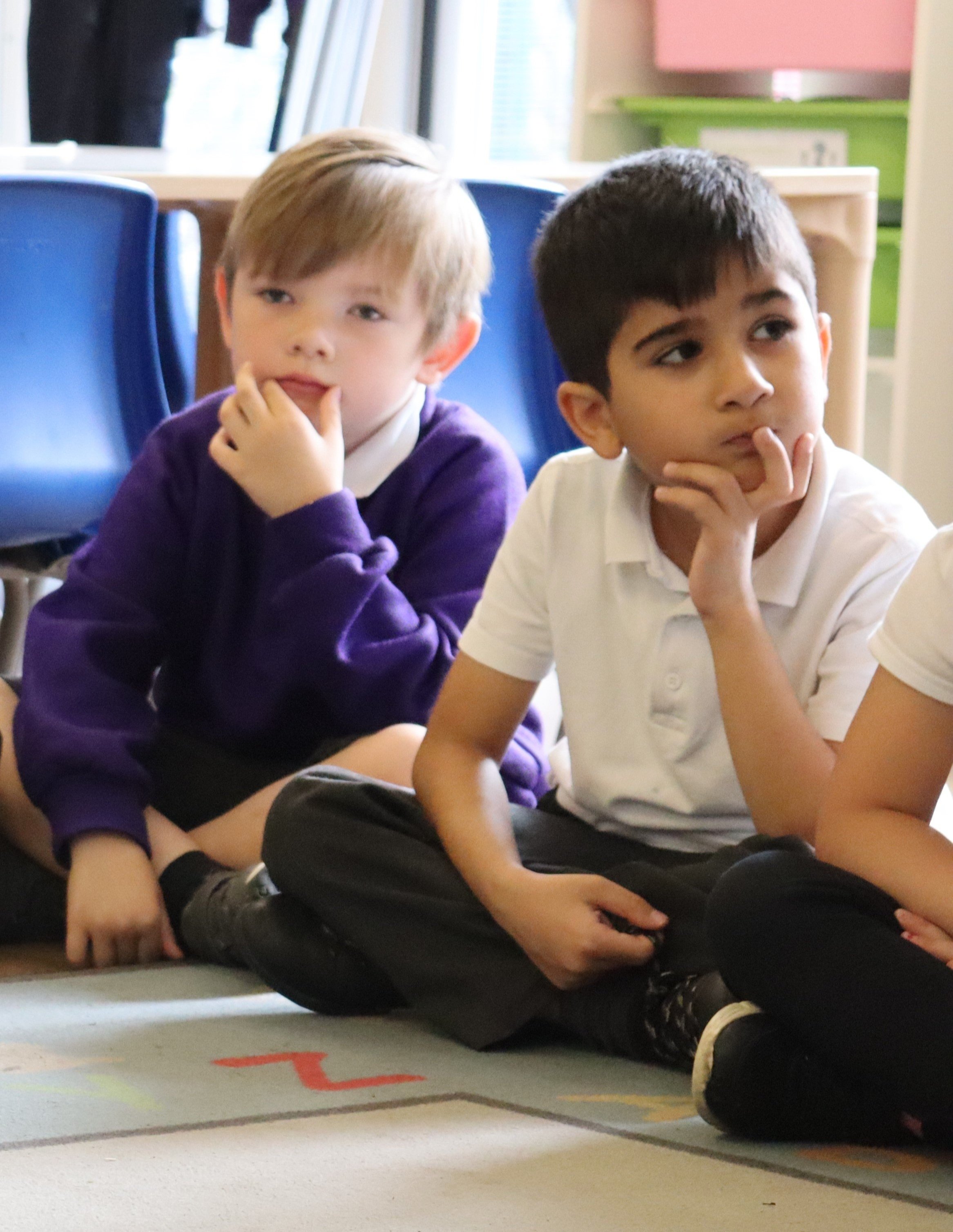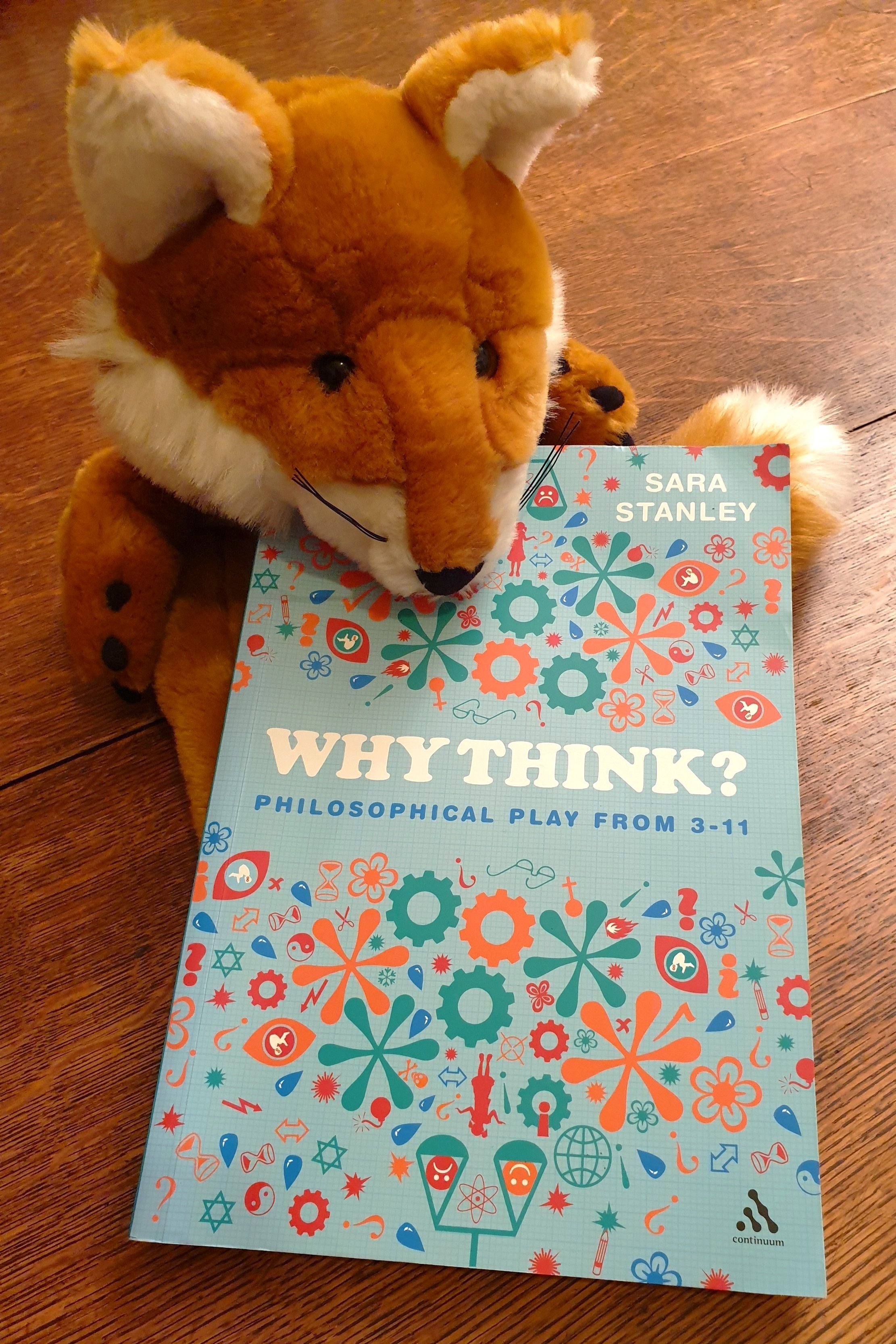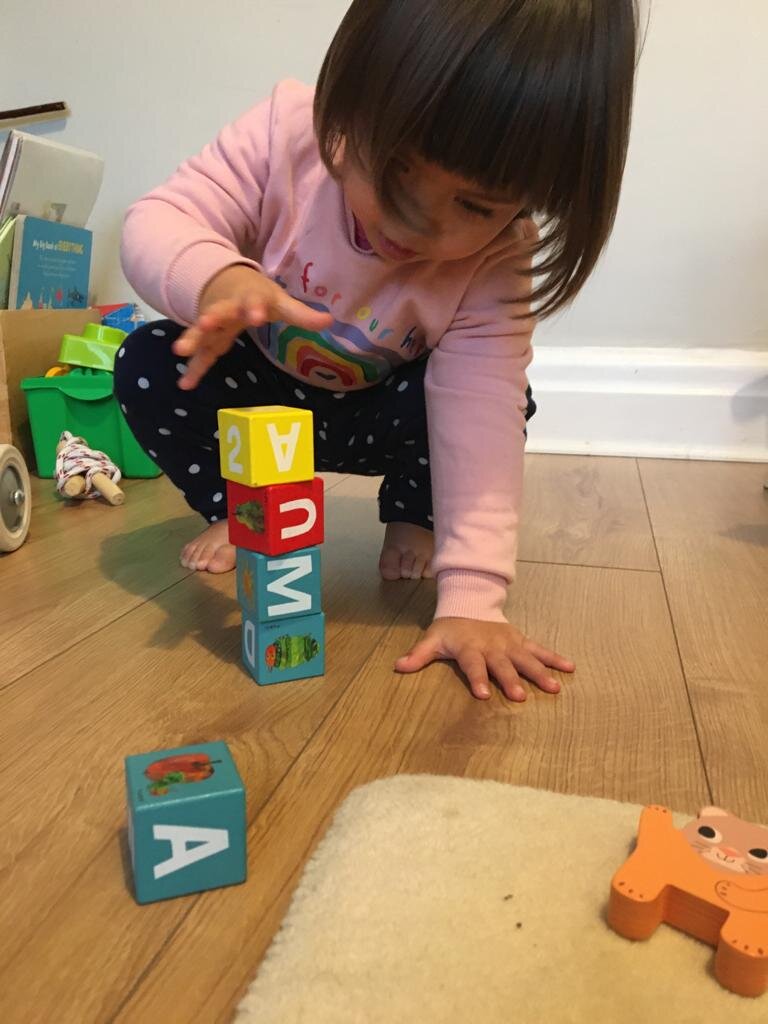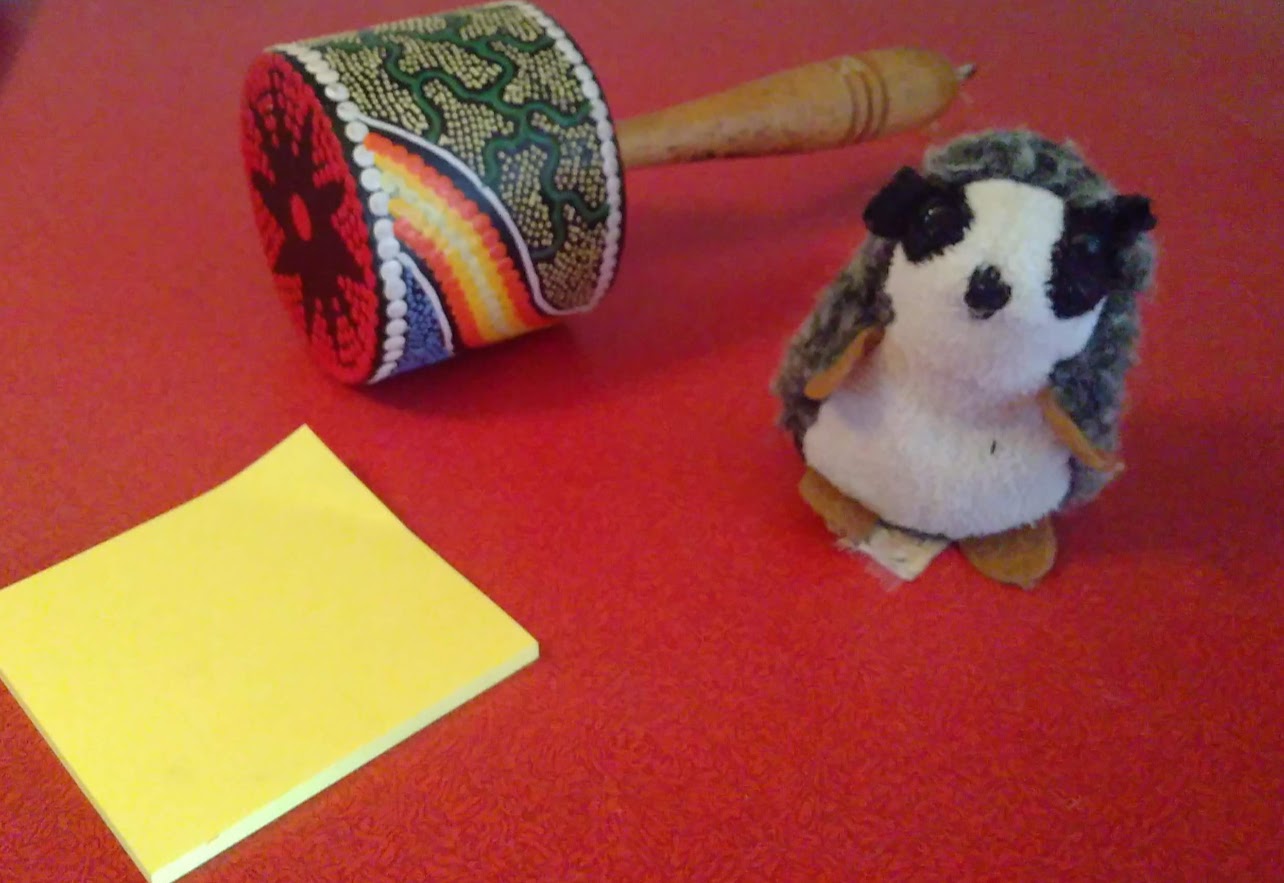A few months ago I observed some really impressive oracy in a reception class.
It was during a well-planned lesson on minibeasts. The children had read Aaaarrgghh, Spider! by Lydia Monks several times, and were doing some talk activities based on it.
Look at these pictures of minibeasts. Which is the odd one out? Why?
Choral rehearsal vocabulary practice, with actions – glistening, petrified, …
Ordering pictures from the story, in pairs
Discussion question – Would a spider make a good pet?
Planning for talk in this way resulted in impressive talking, thinking and reasoning by the children.
Their success was underpinned by things like having time to think, time to talk in pairs, access to talk prompts, as well as non-verbal signals from the teacher. The teacher had clearly invested time in establishing these routines and habits.

Let’s start talking about the impact screen time might be having on language development
Over 200 guides to help you do philosophy with children
Packed with example discussion scenarios, this book will help you raise your facilitation game
Full of practical ideas and lovely examples of children’s words; I recommend this book
A fascinating, accessible book about thinking in the Early Years
Share this 4 minute video with your Early Years colleagues
An example of using a small-but-curious event to get pupils talking and thinking
Seven quick activities to develop talk, listening and non-verbal communication
This resource brings together phrases and tips to help parents and carers develop dialogue with their children at home.
Simple-yet-effective techniques to get three year olds talking and keep them focused.
An opportunity to talk with other teachers about P4C.
Starting with simple/fun questions in Early Years helps children develop the skills to consider deeper ('more philosophical') questions over time.
Talking Toys enables children to immediately organise their turn-taking.
The game ‘Odd One Out’ is a great way to begin lessons on specific themes or topics - you can quickly create a resource box that will last for the duration of the topic.
When using random selection in whole class learning, if a child doesn’t respond, there are several options.

